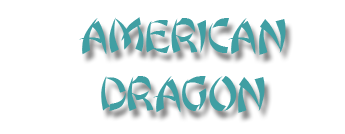| Etiology |
- This condition is due to constitutional insufficiency
and deficiency of the Lungs and Spleen complicated by external
contraction of Wind, Dampness and Heat, which are obstructed
in the skin and flesh. An enduring condition will cause
damage to Yin and Body Fluids resulting in Yin Deficiency
and Blood-Dryness
- The mothers preference for fatty, sweet, spicy, or fried
food or overindulgence in fish and seafood during pregnancy
or lactation will result in impairment of the Spleen's transportation
function and the generation of damp-heat in the interior.
The mother will pass on the Heat Toxins and turbid substances
in the Blood to the baby through breast-feeding. If this
is complicated by improper feeding and nursing after birth,
Damp-Heat may move to the skin and flesh to cause the disease.
Dampness tends to predominate in plump babies, heat in thin
and weak babies.
- Constitutional weakness plus the child's preference for
an inappropriate diet of fish, seafood and spicy food will
damage the Spleen and Stomach and result in the generation
of damp-heat. Where this damp-heat moves outward to accumulate
in the skin and flesh and is complicated by invasion of pathogenic
wind, Dampness or Heat, or toxic substances such as dust
mites or pollen, red papules and vesicles may appear suddenly.
Where impairment of the Spleen's transformation function
results in Damp-Heat accumulating in the Interior, this Damp-Heat
may be retained over a long period, resulting in a chronic
disease with repeated occurrence.
- Congenital insufficiency leads to Liver and Kidney Deficiency.
Lack of proper care after birth results in damage to the
Spleen and Lungs. Damage to the Spleen leads to Deficiency
of the source for generating transformation of Qi and Blood;
damage to the Lungs causes weakness of Wei Qi. As
a result, it is easy for External pathogenic factors to invade.
At the initial stage, these factors are obstructed in the
skin and interstices, causing dryness and itching; at the
later stage, Yin is damaged and Blood is consumed,
making the skin rough and leathery.
|
Clinical Manifestations
|
- Chronic itching
- Superficial inflammation of the skin
- Redness
- Weepy, crusted lesions
- May all begin in first few months of life
- Worsened by stress, environmental changes and wool
- Associated with genetic factors and is also known as
hereditary allergic dermatitis.
Family history of susceptibility to asthma, hay fever,
urticaria, and eczema
-Allergy to heterologous protein
-High serum immunoglobulin (IgE) levels
-An increase in the number of eosinophil leukocytes in
the blood
- Infantile Stage (1 month - 2 years):
Main sites involved:
Cheeks
Forehead
Scalp
It may spread to the trunk and limbs
* Fat babies who tend to sweat are more likely to suffer
from an exudative-type condition.
-Lesions manifest as erythema and a dense
distribution of pinpoint papules, papulovesicles
and vesicles with exudation.
-Thick or thin yellow crusts form when the
exudate dries up.
-A moist, bright red erosive base will often
show once crusts fall off due to rubbing
or scratching provoked by itching.
*Thin, weak babies are more likely to suffer from a dry-type condition.
Lesions are characterized by pale red or dark
red erythematous patches
A dense distribution of small papules without
vesicles
Dryness without obvious
exudation
Grayish-white bran-like scales on the surface
of the lesions
Slight infiltration, lichenification,
fissuring scratch marks, or bloody crusting
will be present in a persistent condition
- Childhood Phase (3-12 years):
Main sites involved:
Antecubital and popliteal fossae
Neck
Wrists and
Ankles
Lichenification, excoriations and dry skin are frequent
Sleep may be affected
In some, small, firm papules are found on back and extensor
aspects of the limbs; excoriation may lead to blood crusting
and pigmentation
- Adolescent and Adult Phase (12 years - early 20's):
Main sites involved:
Antecubital and popliteal fossae
Anterior and lateral aspects of the neck
Circumscribed dry lesions appear with infiltration, thickening
and lichenification, and pigmentation as a sequel
Hands may also be involved after contact with irritants
- Atopic Dermatitis: A chronic, superficial inflammation of the skin, characterized by itching inside of the elbows and behind the knees
May have a history of allergies
May begin in infancy
with red, weeping, crusted lesions on the cheeks and scalp then moves to the extremities
Usually abates by age three but reappears frequently throughout one's life
The itching is triggered by scratchy surfaces, humidity and environmental or psychological stress
Repeated scratching leads to lichenification of the skin
Secondary bacterial infections, dry skin and bleeding
may occur with possible changes in color
|
Treatment Principle |
|
Herb Formulas |
|
Points |
|

